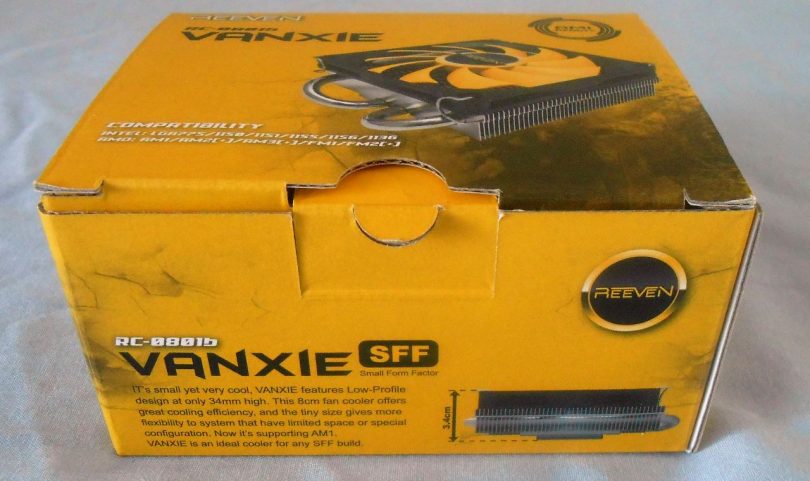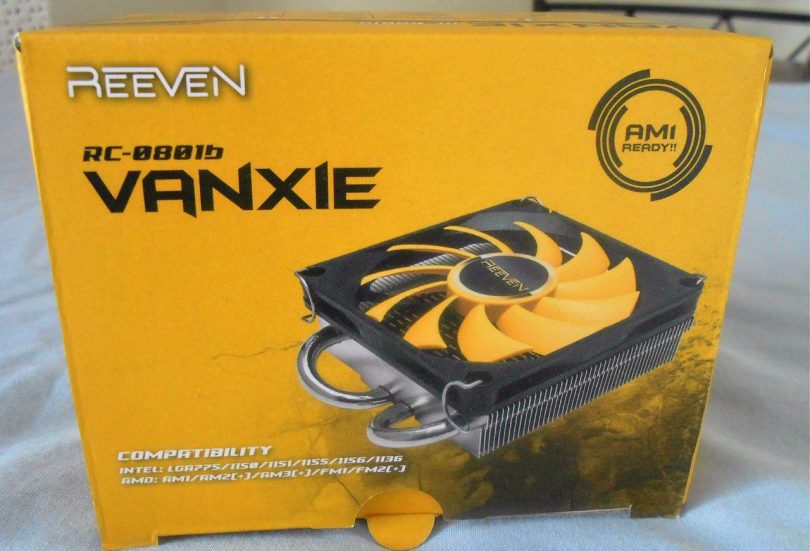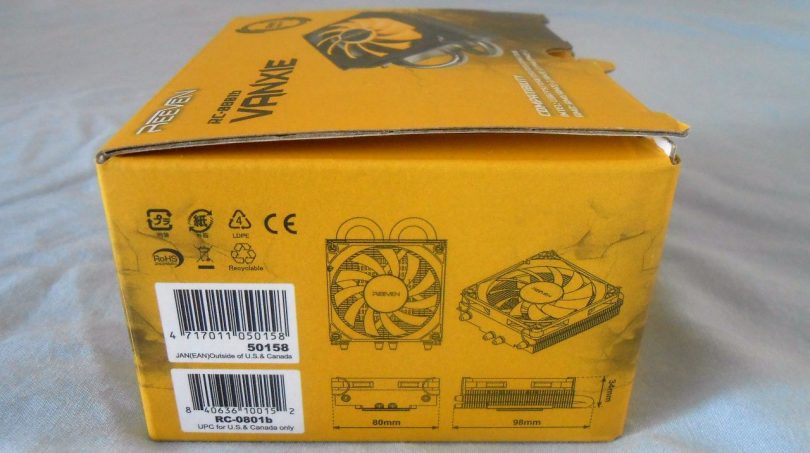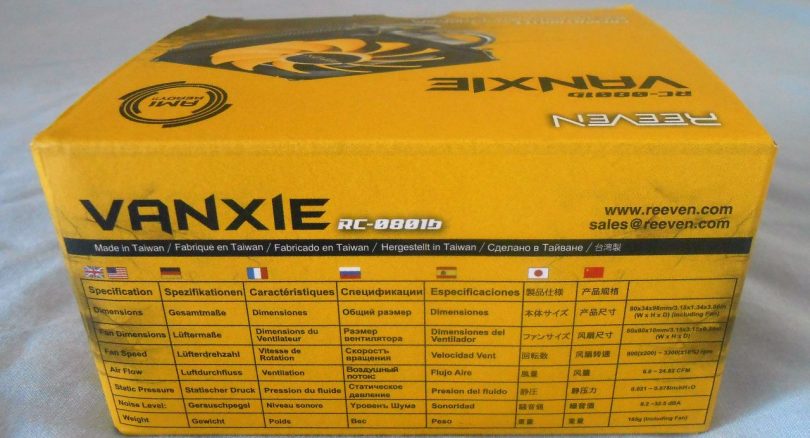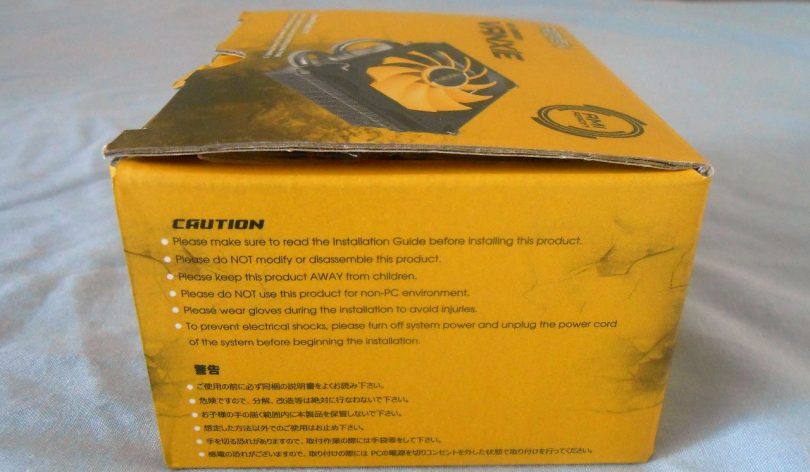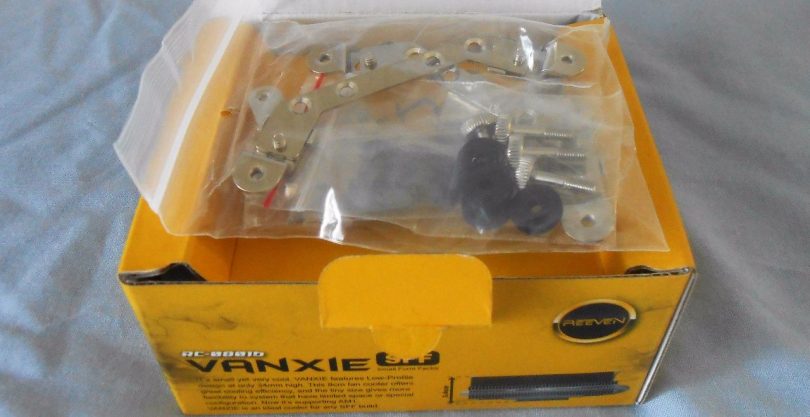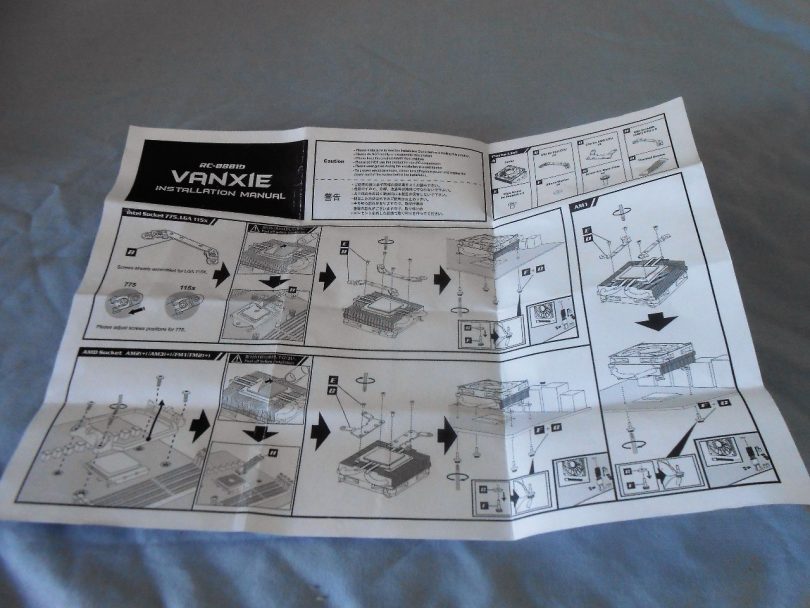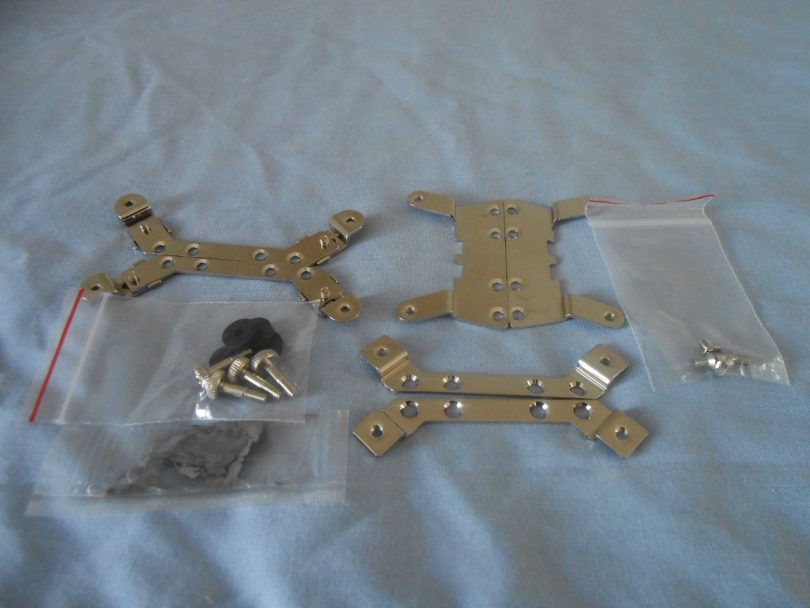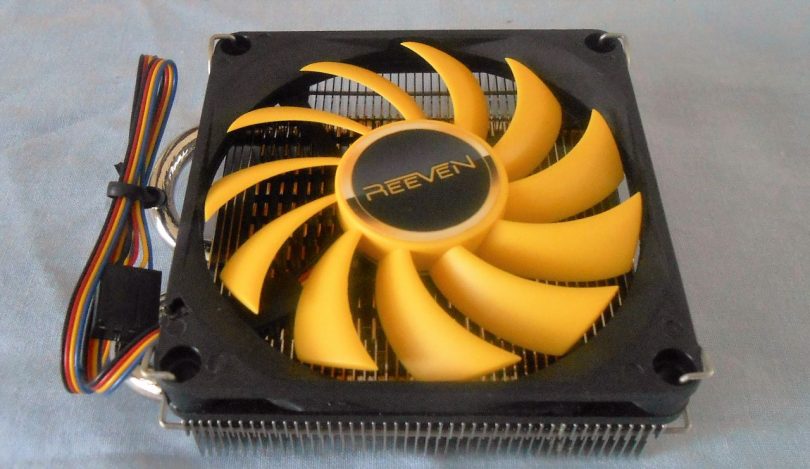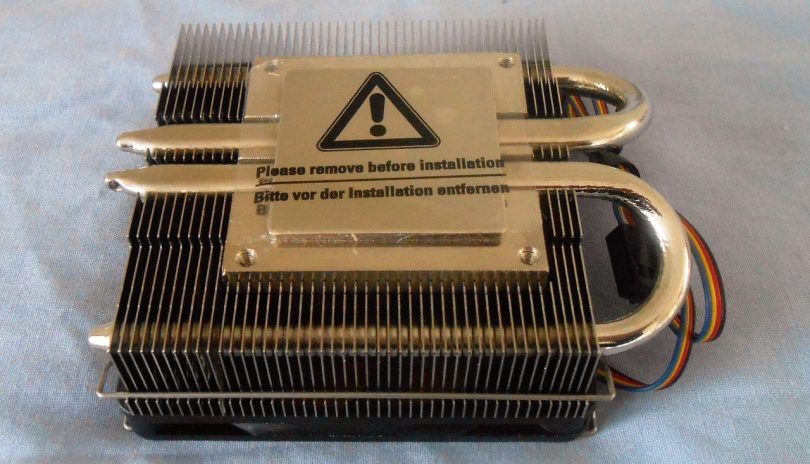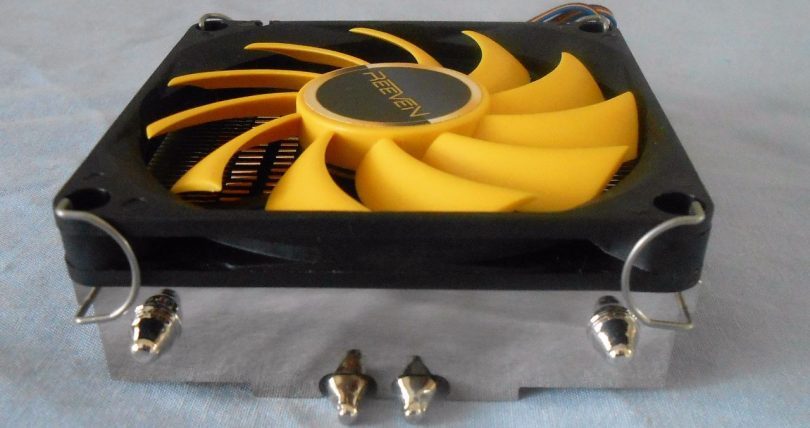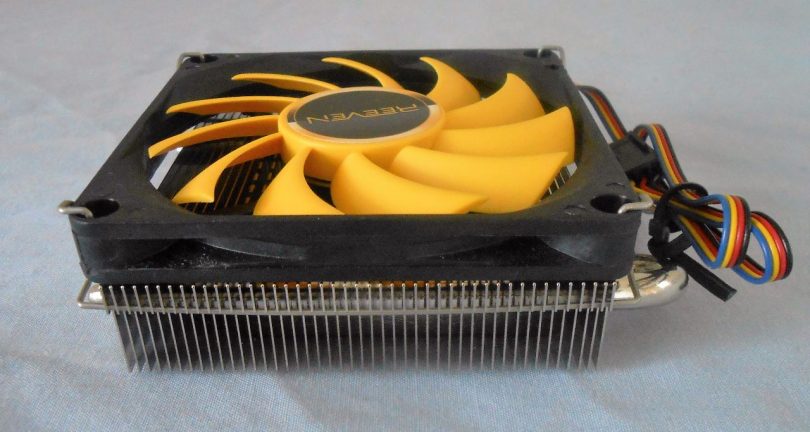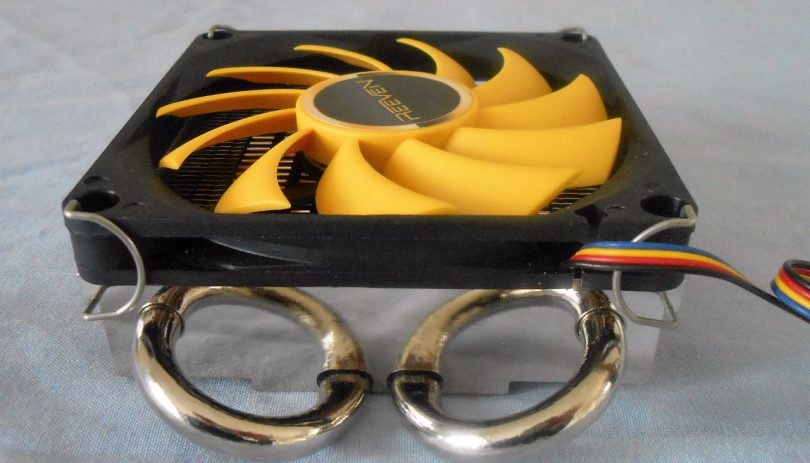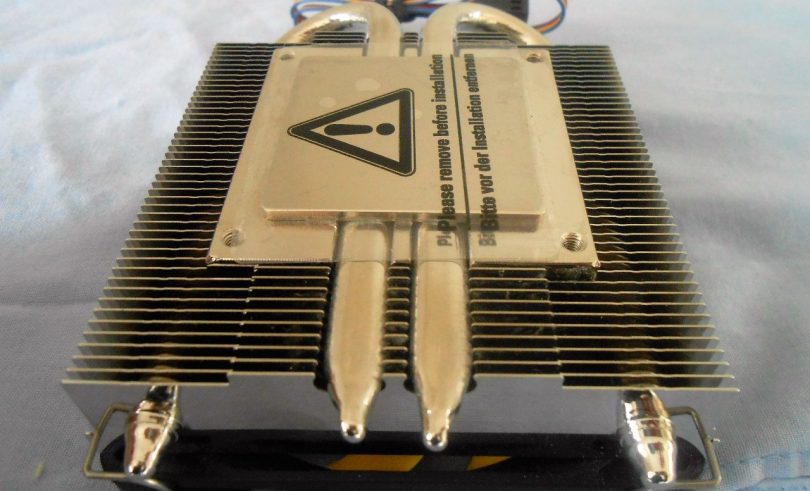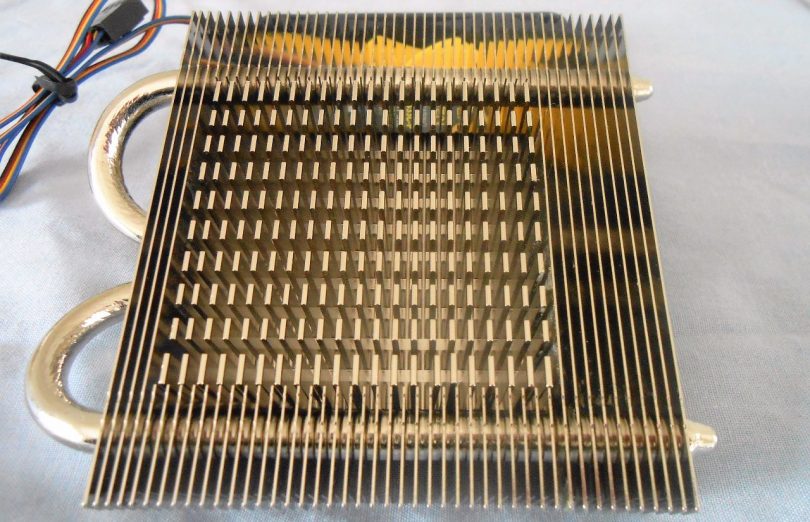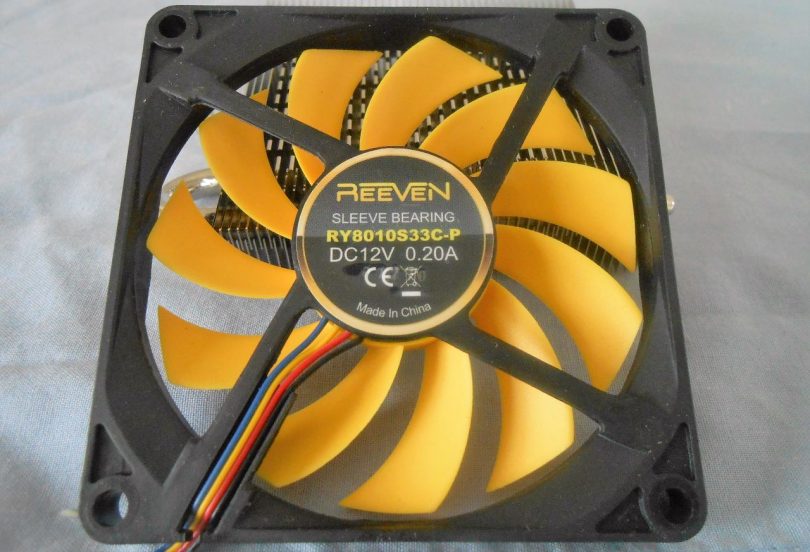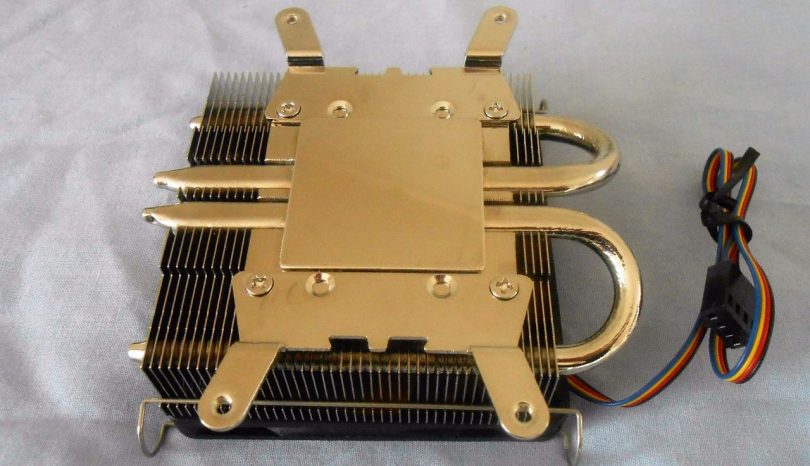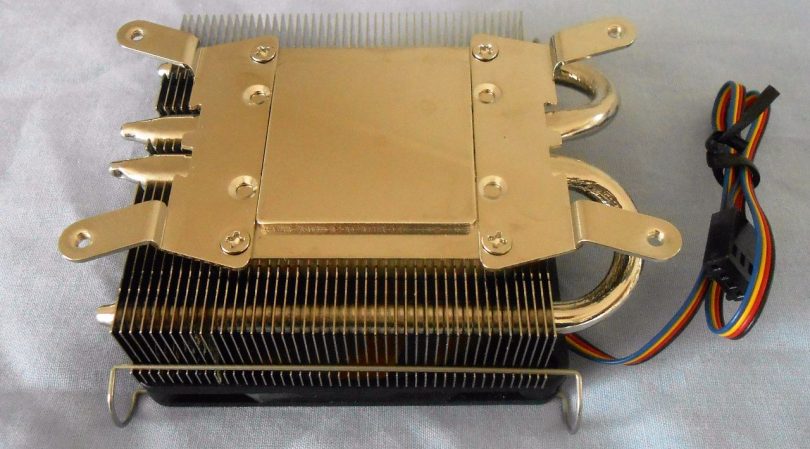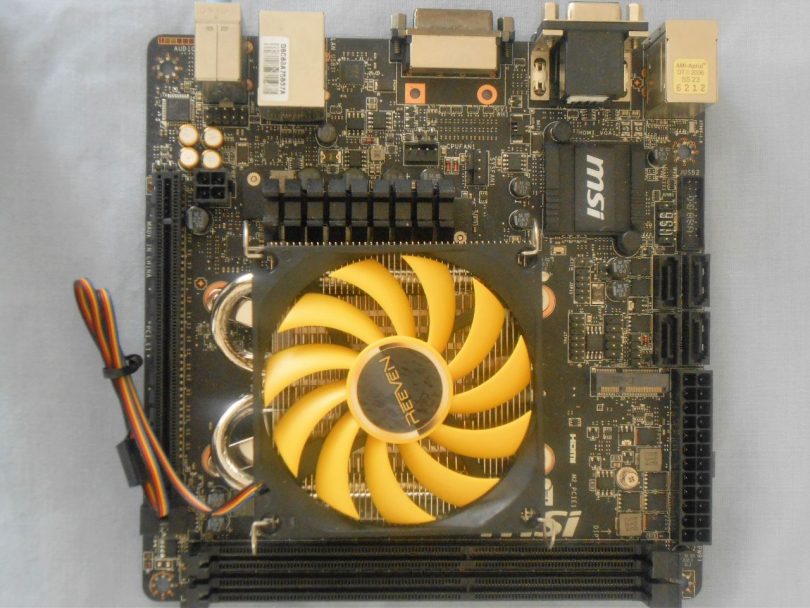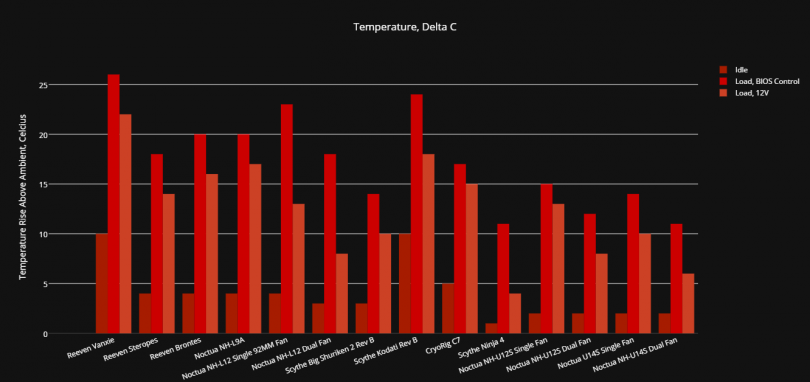After the recent reviews of two of Reeven’s other products, the call from our community came out – they want to see how Reeven’s smallest cooler, the Vanxie, performs. Today we have that cooler on our SFF test bench to see how it performs. The main competitor, the Noctua L9A, has already been through the gauntlet, how will the Vanxie compare?
As an aside, I applaud Reeven for their (amusingly) honest marketing for this cooler. From their specification that the cooler is for SFF systems, to the following quote from the page on their website;
Sufficient Cooling
Cooling efficiency in a compact size, ideal for builds with limited space
It pleases me that Reeven doesn’t oversell the product. Hyperbole, it seems, has no place in the company’s vernacular.
[mks_separator style=”blank” height=”2″]
The Reeven RC-0801b Vanxie
| HEATSINK SPECIFICATION | |
|---|---|
| Dimension (with fan) | L80 mm x W98 mm x H34 mm |
| Weight (with fan) | 325 g |
| Heat pipes | Copper heat pipe (x2) |
| Fin Material | Aluminium |
| Mounting plate | Copper nickel plated |
| Replaceable Fan | Yes |
| FAN SPECIFICATION | |
|---|---|
| Dimension | L80 mm x W80 mm x H10.8 mm |
| Connector | 4 Pin PWM |
| Rated Speed | 800 ~3300 RPM |
| Noise Level | 8.2 – 32.5 dBA |
| Max Air Flow | 6 – 24.82 CFM |
| Voltage | 12V |
This product supports Intel LGA-775, LGA1150, LGA1151, LGA1155, LGA1156, and AMD AM2, AM2+, AM3, AM3+, FM1, FM2, FM2+, as well as socket AM1.
[mks_separator style=”blank” height=”2″]
Unboxing the Vanxie
A first look. I have one important thing to say here. THANK-YOU Reeven for including a pulltab on the box closure. That little half circle means I was able to open the box without destroying it!
Reeven’s colour scheme, as seen on the previous reviews, is still apparent, and matches the product well.
[mks_separator style=”blank” height=”2″]
[mks_separator style=”blank” height=”2″]
[mks_separator style=”blank” height=”2″]
[mks_separator style=”blank” height=”2″]
The usual box art and information are present, the details of which I have reproduced above in the table.
[mks_separator style=”blank” height=”2″]
Upon opening the box, we see the mounting kit sits in the top of the box, separated from the cooler by two layers of cardboard to ensure the cooler is safe!
[mks_separator style=”blank” height=”2″]
The instruction manual is clear, however, the AMD mounting diagrams are missing a trick – the cooler can be mounted in two ways.
[mks_separator style=”blank” height=”2″]
The mounting hardware, clockwise from top left – Intel brackets, for 115x, 775 and 1136; AMD brackets for AM2(+), AM3(+), FMx; screws to mount the brackets to the cooler, AM1 brackets, a single dose of thermal paste, and the mounting screws.
[mks_separator style=”blank” height=”2″]
The Reeven Vanxie
Featuring Reeven’s yellow and black colour scheme, this is the Vanxie cooler. The cooler is very compact, reminiscent of it’s main competitor, the Noctua NH-L9A, in form factor. An 80mm, 10.8mm thick, fan is mounted using the usual wire clips. I do wish cooler manufacturers would sleeve the fan cables or at the very least, use all black wires.
[mks_separator style=”blank” height=”2″]
Underneath the cooler, we see the well polished base, made from a nickel plated copper block. The two heatpipes look huge! This is mostly due to the tiny size of the cooler though. the layout of the heatpipes can be seen, with both going all the way through the fins. The bracket mounting holes are square, so the brackets can be mounted in both directions, a win for us AMD users.
[mks_separator style=”blank” height=”2″]
[mks_separator style=”blank” height=”2″]
[mks_separator style=”blank” height=”2″]
And a few more views of the cooler…
[mks_separator style=”blank” height=”2″]
Another shot of how the heatpipes are routed.
[mks_separator style=”blank” height=”2″]
Hidden under the fan is a surprise! These central fins are machined from the base block, rather than part of the traditional fin structure.
[mks_separator style=”blank” height=”2″]
The fan is an 80x80x10.8mm unit, with 11 blades, a power consumption of 0.2 amps, leading to a wattage of 2.4W at peak load.
[mks_separator style=”blank” height=”2″]
Installation and Compatibility
Our test system is AMD based, so we will install the AMD mounts. They are easily installed with 4 countersunk screws. This is the direction that the manual suggests you install the brackets. I do realise that from this picture, I have the fan clips reversed. This has no effect on cooling performance, just on aesthetics. Woops!
[mks_separator style=”blank” height=”2″]
However, due to the square mounting hole layout, the brackets can also be installed this way, a win for AMD users!
[mks_separator style=”blank” height=”2″]
Attached to the board in the second bracket layout, the cooler conflicts with absolutely nothing on our very restrictive test platform. Rotated 180 degrees from this layout, the cooler is still conflict free. When I proceeded to install the brackets in the manual-specified positions, the cooler conflicted with the VRM heatsinks. This is a shame, but the ability to rotate the cooler around on the brackets to ensure an easy mount is very much appreciated. Well done Reeven.
[mks_separator style=”blank” height=”2″]
Testing
To test this cooler, we used the SmallFormFactor.net thermal test bench and methodology, as detailed here.
[mks_separator style=”blank” height=”2″]
Results
Overall, the cooler performs adequately (see what I did there?) for its size. At full load, it performs at the bottom of the pack, but given the generally quiet performance (and lack of any adverse aural characteristics), that’s to be expected. The cooler is the lightest cooler, by some margin, that we have tested so far.
At 12V, the cooler performs a bit better, but interestingly, without any harsh noise characteristics. I expected a whining fan, given the cooler’s size, but was only greeted by the sound of rushing air. Well done to Reeven for the design of this fan.
[mks_separator style=”blank” height=”2″]
Conclusion
The Reeven Vanxie is a quality little cooler, comparing just below it’s main competitor. As with the previous Reeven coolers, the design and build quality of this product is very good, making for a good choice in this form factor and at the MSRP.
Even at 12V, the cooler emits no harsh audible tones or noises, and can easily keep up with our test bench – keep in mind there’s still 20 degrees above the PWM controlled load temps before the APU hits thermal maximums.
Pros
- Good value for money
- No negative aural characteristics, even at 100%
- Very small
- 100% compatibility on out challenging test system
Cons
- The poorest performing (non-stock) cooler we have tested thus far (ignoring aural characteristics)
[mks_separator style=”blank” height=”2″]
The Reeven Vanxie is available for around US$30.00 on NewEgg.com
[mks_separator style=”blank” height=”2″]
Thoughts? Discuss them in the forum.
[mks_separator style=”blank” height=”2″]
Review sample provided by Reeven.
Here at SmallFormFactor.net we give manufacturers the ability to be part of the community. We offer a right to reply to hardware reviews. If a manufacturer responds, their comments will be posted here.

